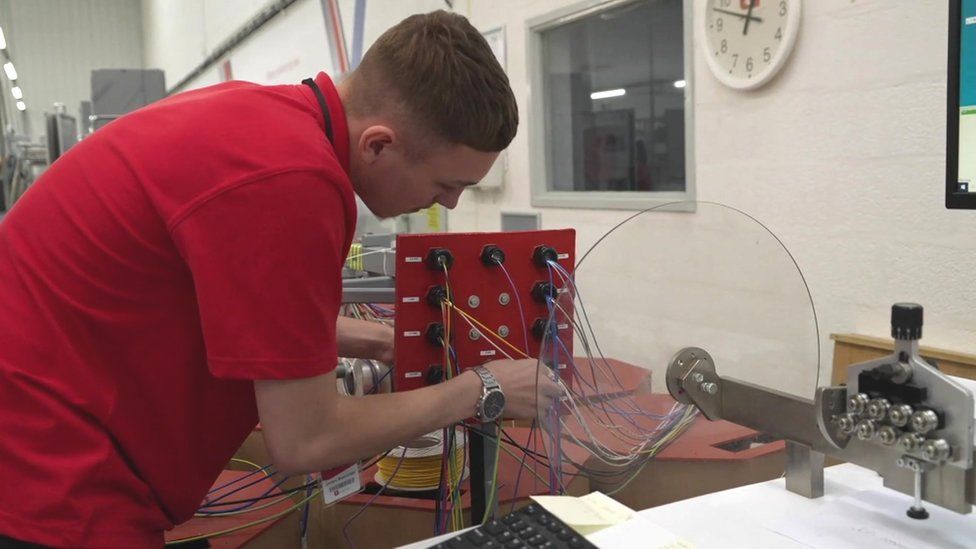
Turning points in the economy can be a little messy.
Just over two decades ago, the then Bank of England deputy governor Mervyn King said new economic figures had the air of John Travolta in Saturday Night Fever: “Old-fashioned disco dancing – sharp movements in unpredictable directions creating much excitement accompanied by a good deal of noise.”
It is again an apt description of the British economy.
This week should have been a reliable staging post on a path of disinflation, and a sign that three years of inflationary crises and shocks were now washing out of the economy. The household energy shock that forced inflation above 11% went into reverse, bringing inflation below 7% in July.
But the figures had a significant sting in the tail.
Measures of underlying inflation, such as core inflation, which strips out the direct impact of energy and food, remained stuck at June’s rate. Services inflation actually went back up, to a joint 31-year high.
It is these measures of more enduring forms of inflation that the experts setting interest rates are most focused on, not the predictable fall in the headline rate, as the household energy cap gradually lowers gas and electricity bills. And this came on top of some punchy rises in wages (in cash terms).
So, by the end of this week, yet again, the financial markets were arching their eyebrows at UK government borrowing.
Ten-year gilt yields, a measure of the cost of decade-long loans to the government, shot up to their highest levels since the 2008 financial crisis.
Two-year yields, which underpin fixed mortgage rates, were also back up, having come down after similar market jitters in June.
The markets are again starting to assume the UK is more inflation-prone than it was and than other similar countries, and that higher interest rates will also linger for longer. Indeed a further rate rise next month now looks very likely, with more to follow.
Those disco-dancing figures can be seen across the economy too. On the High Street, Wilko is in administration, whereas at the same time Marks & Spencer has said it is making more profits than expected.
Travel firms, some hotels and restaurants are booming as a certain section of the population spend heavily on leisure. In contrast, construction firms – even those working on prestigious Premier League football stadiums – are facing administration because of spiralling costs.
In some supermarkets such as H & Jodie’s Nisa Local in Walsall, the owners tell me they are planning to subsidise hot water bottles for customers who still cannot afford their energy bills.
The £1 chocolate bars. that became £1.25 bars in spring, have now increased to £1.35, proprietor Harjit Singh shows me. Those moves, and the fact they are not returning to the £1 price point, are entirely consistent with the rate of inflation slowing to 7%.
Harjit revises all prices on a weekly basis. On average, they are still going up. Milk prices may be falling, he says, but food price inflation overall is still set to remain in double digits for the rest of this year, meaning the cost of living crisis is far from over.
In the central banking cliche, the job of the Bank of England governor is to remove the punch bowl before the party gets out of hand. But there is no boom or party right now across the economy.
There do seem to be pockets of froth that could justify higher interest rates. But interest rate rises are a blunt tool, affecting a different section of the economy – those with large mortgage borrowing and indebted companies.
It could create a perception of unfairness, that those enjoying pockets of frothy inflationary spending are forcing higher rates on everyone else. Others might say that excessive low interest rates have until recently subsidised massive borrowing at the expense of prudent savers.
What could be happening is that rates are being forced higher to help temper economic demand, to keep it in line with a fall in the supply potential of the economy.
Fewer workers in certain sectors, more trade barriers with Europe, and a fall in investment mean the UK can produce less.
The nation’s productivity has been hit by the aftermath of the pandemic, an energy shock and post-Brexit policy choices.
The government has changed policy to try to get sick workers back into the labour force and has lowered trade barriers with some Asian markets, but these will take time to have an effect.
Indeed, other efforts to improve the economy’s productivity may well be hit by rising interest rates. At Walsall-based PP Control & Automation, there are boxes with wires controlling everything from airport security, to Formula 1 metal stamping, to cow milking.
It’s exactly where the UK has lagged and could improve growth without igniting inflation. Boss Tony Hague tells me: “I think UK manufacturing generally is managing inflation as best it can. It’s obviously having a big impact on the end user, the consumer, but I think from a manufacturing perspective… the cost of borrowing is quite a concern.”
Right now, the medicine is more concerning here than the disease.
The housing market seems to be in a holding pattern. Rises in interest rates are being managed by banks in the form of longer mortgage terms for borrowers. Repossessions and arrears are still surprisingly low.
There is some stress among mortgaged landlords, and prices have fallen from their peak, but for now Bank of England governor Andrew Bailey will not call it a “correction”. As he told me earlier this month: “It’s an adjustment but I think we should avoid… preaching crisis. It’s not that.”
For now, the market reaction does seem to lurch in response to every small turn in the data. The Bank of England has noted the UK now appears especially sensitive, amid perceptions of particularly persistent inflation. As it also noted, there are some “highly unusual” features of the UK economy right now.
Even as inflation falls, and real wages begin to rise again, cuts to interest rates seem some way off, and the path to a more normal economic situation remains especially bumpy.